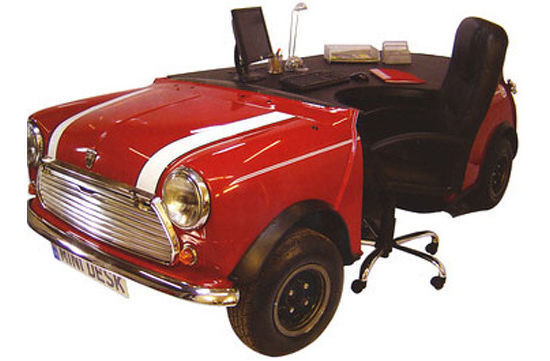
2014 saw the emergence of some truly innovative drone projects 2014 wasn’t the year that drones first entered the consumer lexicon, but it did see the notion of using these unmanned vehicles to our advantage become much more palatable. Package deliveries and carrying out conventional robotic tasks are some concepts that have defined the progress of drones in the past 12 months, but, as is typical of emerging technologies, the more their potential is realized the more they find uses in unexpected new applications. Let’s have a look over some of the year’s more surprising, yet significant, drone projects that promise to shake things up in exciting new ways. Getting on top of malaria in Southeast Asia 
In the forests of Maylasia and the Philippines, a new type of malaria has emerged over the last decade. Known as Plasmodium knowlesi, this particular parasite was long thought to affect only long-tailed and pig-tailed macaques. But recently, reports have started popping up of human infections, with a number leading to organ failure and even death. Researchers have had an inkling that deforestation in the region is changing the way people, mosquitos and the infected monkeys interact and how the disease is spreading. Now a team of experts from London’s School of Hygiene & Tropical Medicine are using drones to monitor the terrain from above, collecting geographical data to gain new perspectives on the environment, the populations and movements of the monkeys. The program is still in its early stages and is expected to run for 5 years. Delivering medicine to remote German islands 
While drone delivery heavyweights like Amazon and Google um and ah, and grapple with a maze of red tape, courier company DHL has been testing out UAVs to deliver high-priority pharmaceuticals to the tiny German island of Juist. Running for several weeks starting in September, the pilot program saw DHL’s so-called Parcelcopter carry medication from the seaside village of Norddeich over 12 km (7.5 mi) of open water to a designated landing pad on the island. This involved the craft taking off, flying and landing autonomously, though its path and other elements of the flight are monitored by staff at a control room in Norddeich. The Parcelcopter cruises at an altitude of 50 m (164 ft) at up to 18 m per second (40 mph). The pilot program was limited to high-priority pharmaceuticals, but marked the first systematic delivery of items to customers using drones. Safely detecting landmines 
Bosnia-Herzegovina is one of the countries most heavily contaminated with landmines, with an estimated 120,000 still leftover from war during the 1990s. While efforts to remove the mines using terrestrial robots and animals are ongoing, these are time-consuming and inherently dangerous. Drone company CATUAV, space services firm Telespazio and the European Space Agency teamed up to try and detect landmines from above, a method that would be quicker and less risky. Using a purpose-built aircraft equipped with optical sensors and electronics, the team snaps images of the terrain from the sky. These are then processed and algorithms are run, enabling the team to calculate the chances of land mine presence in the area. The Landmines Detection project is a semi-finalist in the United Arab Emirates Drones For Good Award, the winner of which will be announced mid-January and warded US$1 million. Busting illegal fishermen along the coastline of Belize 
Belize’s famed coral reef systems are under threat from unsustainable fishing, but tackling illegal activity proves difficult with much of the coast is obscured by leafy mangrove forests. Regulations are in place but have been tough to enforce, leading to the launch of a drone program in July that has given conservationists new hope. The Belize Fisheries Department teamed up with the Wildlife Conservation Society and an organization called Conservation Drones to put UAVs in the sky above the coast. Capable of flying autonomously for more than an hour and up to a range of 50 km (31 mi), the drones capture high-res photo and video from above. Authorities then monitor the images for suspect activity, enabling them to more efficiently conduct searches and deploy patrol vessels. Protecting rhinos from poachers 
From the Caribbean coast to the arid lands of Africa, drones are proving their worth in a growing number of conservation efforts. Californian company Airware teamed up with Kenya’s Oj Pejeta Conservancy to run tests on a drone surveillance program that helps to preserve the ailing rhino population. Using fixed and gimbal-mounted cameras, the drones relayed digital video and thermal images to park rangers in control stations. The rangers were able to program flight paths and have the drones fly autonomously from take-off to recovery. The idea being that when the images indicated the presence of poachers, they could deploy a security team to deal with the incident. Oj Pejeta said the program surpassed all their expectations. Cutting response time for heart attack victims 
Every second is critical when treating a patient who has suffered a cardiac arrest, with longer response times relating directly to lower chances of survival. Having quick access to a defibrillator and knowing how to use it can be the difference between life and death. Alec Momont, a graduate student at Holland’s Deft University of Technology, has developed a prototype of a so-called Ambulance Drone with a view to cutting down these response times. Once emergency services are contacted about a heart attack, they deploy the drone carrying a defibrillator. Using GPS, the drone travels to the location of the call at speeds of up to 100 km/h (62 mph). An integrated webcam gives the emergency services a live stream of the scene and allows them to guide the people on the ground through the process of applying the defibrillator to the patient. Momont posits that his solution can get a defibrillator to a patient in a 12 sq km (4.6 sq mi) radius within a minute. He is hopeful the Ambulance Drone will take flight within 5 years. Tracking action sports heroes 
Videography that simply wasn’t possible before the proliferation of camera-wielding drones has got to be one of its most eye-catching capabilities (check out this surf video, for example). While the mounts become more stable and resolution of the cameras continue to improve, there is one particularly useful function that is starting to feature more heavily in the drone photography market. Commonly referred to as Follow Me, this sees the drone automatically track an athlete from above as they ski, board, ride, run and somersault their way through their adrenaline-fuelled exploits. Though a bunch of drones are touting this as their primary feature, none come as well-credentialed and market-ready as the Iris+. This drone can be bought now for $750 (you’ll need to mount your own GoPro) and can fly above and follow a user carrying a GPS-enabled Android device. It uses a Tarot T-2D motorized gimbal mount to pan, tilt and keep the user in the center of frame. High-stakes, Star Wars-style drone races 
In October, the Airgonnay drone club took to a dense forest in the French Alps to pit vehicles against each other in what it hopes will be the first of many high-stakes drone races. 24 pilots raced their drones through a 150 m (492 ft) course, weaving through trees and low-hanging branches while streaming a first-person view to their goggles from built-in micro cameras. This year’s field was made up of quadcopters and multicopters that were optimized for speed and agility, darting through the trees at up to 50 km/h (31 mph). The club plans on live-streaming next year’s event over the internet and hopes to attract a higher caliber of competitors with drone pilots flocking from overseas. Onwards and upwards Drone technology is perceived as being in its early stages in terms of what could be achieved. That we are already seeing it have a positive impact in such diverse ways is pretty darn exciting, and you do get the feeling that 2015 has even more unimagined, pioneering ideas in store. We’ll be doing our best here at Gizmag to keep across all the developments, but judging by the rate of advancement so far, it certainly looks like we'll have our work cut out for us.
| 






















































